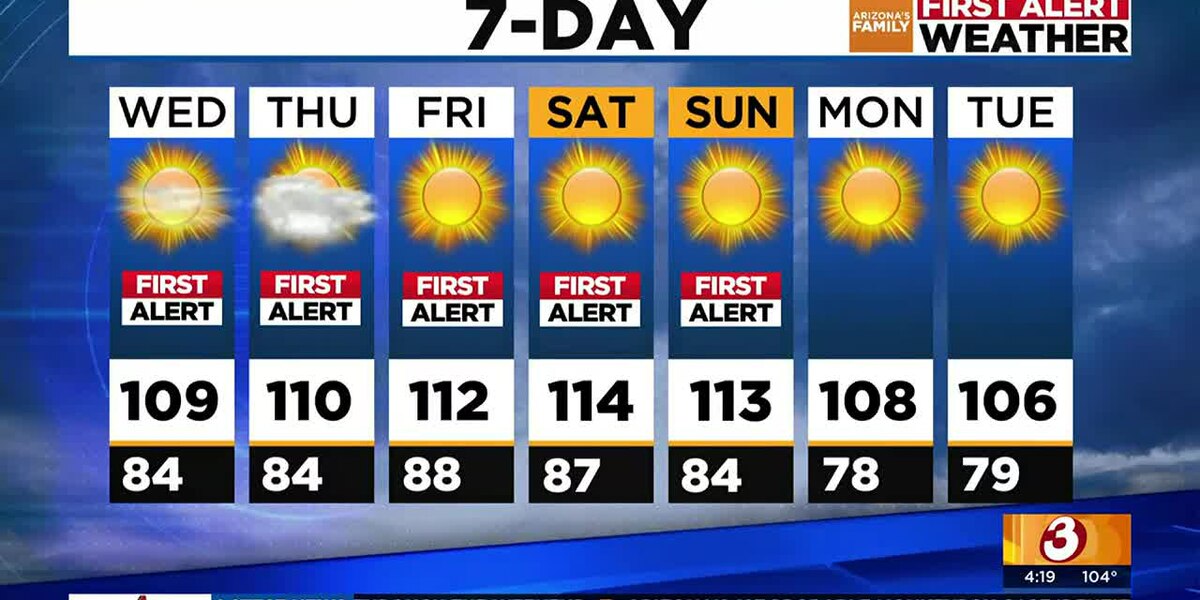Why Excessive Heat Warnings Are Often Missing From Forecasts

Table of Contents
Limitations of Current Weather Forecasting Models
Accurately predicting extreme heat events is a complex challenge, hampered by inherent limitations in our weather forecasting models. These models, while improving constantly, still struggle to capture the nuances of localized heat.
Resolution and Accuracy Issues
Current meteorological models often lack the spatial resolution needed to pinpoint extreme heat pockets. This is particularly problematic in urban areas, where the urban heat island effect significantly amplifies temperatures.
- Insufficient spatial resolution: Many models have grid sizes too large to accurately represent the microclimates within cities or complex terrains.
- Difficulty modeling complex terrain effects: Mountains, valleys, and bodies of water all influence local temperatures in ways that are difficult to fully capture in models.
- Inaccuracies in predicting extreme temperature fluctuations: Sudden spikes in temperature, often characteristic of heatwaves, are challenging to predict with high accuracy.
Data Scarcity and Quality
The accuracy of any weather model relies heavily on the quality and quantity of input data. Unfortunately, weather station data is often incomplete or unreliable, particularly in less populated areas.
- Lack of sufficient weather stations: Many regions, especially rural areas, lack the dense network of weather stations needed for accurate localized forecasting.
- Inconsistent data reporting across regions: Variations in data collection methods and reporting standards hinder the seamless integration and analysis of weather information.
- Challenges in data assimilation and processing: Integrating vast amounts of data from different sources into weather models is a complex process prone to errors.
The Complex Nature of the Heat Index
The heat index, combining temperature and humidity to reflect the perceived temperature, is even more challenging to forecast accurately.
- Difficulty in precisely predicting humidity levels: Humidity is a highly variable factor influenced by many factors and challenging to model precisely.
- The non-linear relationship between temperature and humidity in determining the heat index: The relationship isn't straightforward; small changes in one can significantly affect the other.
- The impact of wind speed and sunshine on the perceived heat: These factors influence how hot it feels, adding further complexity to accurate heat index prediction.
Underreporting and Underestimation of Extreme Heat Events
The lack of sufficient excessive heat warnings also stems from systemic underreporting and underestimation of extreme heat events.
Historical Data Bias
Historical weather data may not accurately reflect the frequency and intensity of past heatwaves due to several factors.
- Changes in data collection methods: Older data may be less reliable due to less precise measurement techniques.
- Incomplete historical records: Gaps in historical records can lead to an inaccurate assessment of past heatwave patterns.
- The influence of climate change on increasing heatwave severity: Climate change is intensifying heatwaves, making historical data less relevant for predicting future events.
Communication Gaps and Prioritization
There's a significant communication gap surrounding heatwave dangers and the prioritization of heat warnings compared to other severe weather events.
- Limited public awareness of heatwave dangers: Many people underestimate the severity of heatwaves, leading to a lack of preparedness.
- Resource allocation within meteorological agencies: Resources may be disproportionately allocated to predicting other severe weather events perceived as more urgent.
- Differences in the perceived urgency of different weather events: Heatwaves, unlike sudden, dramatic events like tornadoes, unfold gradually, potentially diminishing their perceived urgency.
The Role of Climate Change in Complicating Forecasts
Climate change acts as a significant multiplier, exacerbating the challenges in accurately predicting extreme heat.
Increased Frequency and Intensity of Heatwaves
Climate change is causing a demonstrable increase in both the frequency and intensity of heatwaves globally.
- Rising global temperatures: The ongoing increase in global average temperatures directly contributes to more frequent and intense heatwaves.
- Changes in atmospheric circulation patterns: Climate change is altering weather patterns, leading to more persistent and geographically extensive heatwaves.
- Increasing frequency of extreme weather events: Climate change is increasing the overall frequency of extreme weather events, including heatwaves.
Unpredictable Weather Patterns
The changing climate is disrupting established weather patterns, making accurate long-range predictions increasingly difficult.
- More erratic temperature fluctuations: Temperatures are becoming more volatile, making it harder to predict the precise timing and duration of heatwaves.
- Increased likelihood of heat domes: Heat domes, persistent high-pressure systems that trap heat, are becoming more frequent and intense.
- Difficulty in long-range heatwave predictions: Predicting heatwaves several days or weeks in advance is becoming more challenging due to increased unpredictability.
Conclusion
The absence of adequate excessive heat warnings stems from a complex interplay of factors: limitations in current weather forecasting models, data scarcity, communication gaps, and the undeniable influence of climate change. Improving the accuracy and timeliness of excessive heat warnings requires significant advancements in weather modeling technology, increased investment in data collection infrastructure, enhanced public awareness campaigns, and a greater understanding of the accelerating impacts of climate change.
Call to Action: Stay informed about the latest weather forecasts and pay close attention to all heat advisories and warnings. Advocate for improved funding and technological advancements in weather forecasting to enhance the accuracy of excessive heat warnings and better protect public safety. Learn more about heat safety and preparedness by visiting your national weather service and public health organizations. Accurate and timely excessive heat warnings are crucial for protecting lives and mitigating the devastating impacts of extreme heat.

Featured Posts
-
 Updated Des Moines Police Investigating Side Impact Crash
May 30, 2025
Updated Des Moines Police Investigating Side Impact Crash
May 30, 2025 -
 Como Obtener Tu Reembolso Por El Festival Ceremonia 2025 En Ticketmaster
May 30, 2025
Como Obtener Tu Reembolso Por El Festival Ceremonia 2025 En Ticketmaster
May 30, 2025 -
 Amber Heards Twins And The Elon Musk Embryo Dispute A Deeper Look
May 30, 2025
Amber Heards Twins And The Elon Musk Embryo Dispute A Deeper Look
May 30, 2025 -
 Analyse Dolbergs Malscoring Og Potensialet For Et Chokskifte
May 30, 2025
Analyse Dolbergs Malscoring Og Potensialet For Et Chokskifte
May 30, 2025 -
 Mayor Transparencia En Los Precios De Boletos De Ticketmaster
May 30, 2025
Mayor Transparencia En Los Precios De Boletos De Ticketmaster
May 30, 2025
Latest Posts
-
 Elon Musks Awkward Saudi Encounter With Donald Trump
May 31, 2025
Elon Musks Awkward Saudi Encounter With Donald Trump
May 31, 2025 -
 Trumps Changing Stance On Musk Cnn Data Chief Explains
May 31, 2025
Trumps Changing Stance On Musk Cnn Data Chief Explains
May 31, 2025 -
 Madrid Atp 1000 Girons Victory Over Berrettini
May 31, 2025
Madrid Atp 1000 Girons Victory Over Berrettini
May 31, 2025 -
 Munich Tennis Zverev Battles Griekspoor In Bmw Open Quarter Finals
May 31, 2025
Munich Tennis Zverev Battles Griekspoor In Bmw Open Quarter Finals
May 31, 2025 -
 Zverev Vs Griekspoor Bmw Open 2025 Quarter Final Highlights
May 31, 2025
Zverev Vs Griekspoor Bmw Open 2025 Quarter Final Highlights
May 31, 2025
